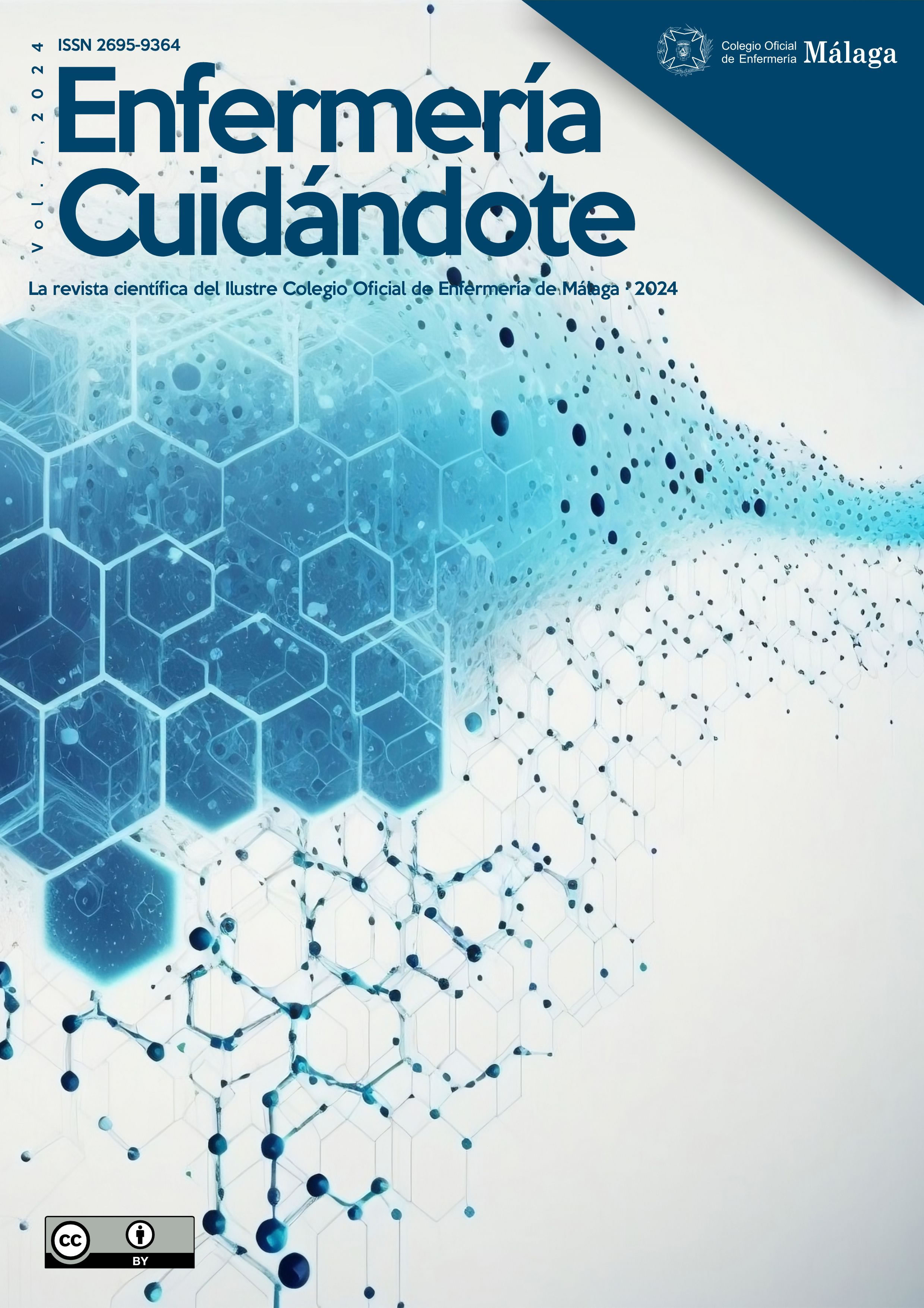Analysis of maternal-fetal complications associated with preeclampsia. Literature review
DOI:
https://doi.org/10.51326/ec.7.4149945Keywords:
Maternal-Fetal Complications, Morbidity, Preeclampsia, PreventionAbstract
Objective: Identify maternal-fetal complications associated with preeclampsia.
Method: the research was developed through a documentary review, a descriptive study, with a qualitative approach around maternal-fetal complications due to preeclampsia. It was investigated in high-impact databases such as: PubMed, Scielo, Scopus, Dimensions and the Google Scholar search engine. Inclusion criteria will be applied such as articles from the last 5 years, between 2018 and 2023, original articles in Spanish and English. The bibliographic review was developed with ten bibliographic sources.
Results: It was identified that young women, especially between 20 and 34 years old, face a higher risk of preeclampsia, therefore, early detection is key and could be implemented in settings with limited resources. Furthermore, attention to risk factors, such as chronic hypertension, is vital, and the combination of acetylsalicylic acid and calcium is suggested in high-risk women as a pharmacological approach.
Conclusion: It is revealed that there are significant maternal-fetal complications, such as high blood pressure and proteins in the urine, with serious consequences for the health of mother and child.
Downloads
References
Dimitriadis E, Rolnik DL, Zhou W, Estrada-Gutierrez G, Koga K, Francisco RPV, et al. Pre-eclampsia. Nat Rev Dis Primers. 2023;9(1):8. https://doi.org/10.1038/s41572-023-00417-6
Puspitasari Y, Santoso B, Nursalam, Sulistyono A. Literature review: Risk factors and early detection of preeclamsia in women pregnant. J Glob Res Public Health. 2020;5(1):9-17. Disponible en: https://jgrph.org/index.php/JGRPH/article/view/153 [Consultado 27-07-2023]
Masini G, Foo LF, Tay J, Wilkinson IB, Valensise H, Gyselaers W, et al. Preeclampsia has two phenotypes which require different treatment strategies. Am J Obstet Gynecol. 2022;226(2S):S1006–18. http://dx.doi.org/10.1016/j.ajog.2020.10.052
Sukmawati S, Sunarno I, Arsyad MA, Idris I. Vaginal and cesarean section delivery with severe preeclampsia and preeclampsia with complications. Enferm Clin. 2020;30:537–40. http://dx.doi.org/10.1016/j.enfcli.2019.07.155
Hromadnikova I, Dvorakova L, Kotlabova K, Krofta L. The prediction of gestational hypertension, preeclampsia and fetal growth restriction via the first trimester screening of plasma exosomal C19MC microRNAs. Int J Mol Sci. 2019;20(12):2972. http://dx.doi.org/10.3390/ijms20122972
Mikuscheva A, Strassding F, MacKenzie E. Three cases of severe placental abruption as a first symptom of preeclampsia. Case Rep Obstet Gynecol. 2021;2021:1–3. http://dx.doi.org/10.1155/2021/3863607
Lai J, Syngelaki A, Nicolaides KH, von Dadelszen P, Magee LA. Impact of new definitions of preeclampsia at term on identification of adverse maternal and perinatal outcomes. Am J Obstet Gynecol. 2021;224(5):518.e1-518.e11. http://dx.doi.org/10.1016/j.ajog.2020.11.004
Muñoz Solorzano LDR, Alvarado Franco HJ, Alvarado Muñoz RN, Alvarado Muñoz BJ. Preeclampsia: Complicación durante el embarazo que se puede prevenir. Pro Sci. 2020;4(30):72–6. https://doi.org/10.29018/issn.2588-1000vol4iss30.2020pp72-76
Vallejo Maquilón AI, Landázuri Barre JE, Loor García KL, Vallejo Gines KL. La preeclampsia – eclampsia. El fantasma latente en las mujeres embarazadas. RECIMUNDO. 2019;3(2):566–81. Disponible en: https://recimundo.com/index.php/es/article/view/464 [Consultado 27-07-2023]
Page MJ, Moher D, Bossuyt PM, Boutron I, Hoffmann TC, Mulrow CD, et al. PRISMA 2020 explanation and elaboration: updated guidance and exemplars for reporting systematic reviews. BMJ. 2021;372:n160. https://doi.org/10.1136/bmj.n160
Morales WB. Análisis de prisma como metodología para revisión sistemática: una aproximación general. Saúde em Redes. 2022;8(Supl.1):339–60. https://doi.org/10.18310/2446-4813.2022v8nsup1p339-360
Loor-Cedeño LA, Pincay-Cardona LD, Yumbo-Santana YS, Reyna-Valdiviezo GD, Villacreses-Cantos KL, Delgado-Molina JB. Preeclampsia y complicaciones materno-fetales. Polo del Conocimiento. 2021;6(2):101–9. Disponible en: https://polodelconocimiento.com/ojs/index.php/es/article/view/2239 [Consultado 27-07-2023]
Tsigas EZ. The Preeclampsia Foundation: the voice and views of the patient and her family. Am J Obstet Gynecol [Internet]. 2022;226(2S):S1254-S1264.e1. https://doi.org/10.1016/j.ajog.2020.10.053
Lakshmy S, Ziyaulla T, Rose N. The need for implementation of first trimester screening for preeclampsia and fetal growth restriction in low resource settings. J Matern Fetal Neonatal Med. 2021;34(24):4082–9. https://doi.org/10.1080/14767058.2019.1704246
Mou AD, Barman Z, Hasan M, Miah R, Hafsa JM, Das Trisha A, et al. Prevalence of preeclampsia and the associated risk factors among pregnant women in Bangladesh. Sci Rep. 2021;11(1):21339. https://doi.org/10.1038/s41598-021-00839-w
Pribadi A. Zero mother mortality preeclampsia program: Opportunity for a rapid acceleration in the decline of maternal mortality rate in Indonesia. Int J Women S Health Reprod Sci. 2021;9(3):160–3. https://doi.org/10.15296/ijwhr.2021.30
Malik A, Jee B, Gupta SK. Preeclampsia: Disease biology and burden, its management strategies with reference to India. Pregnancy Hypertens. 2019;15:23–31. https://doi.org/10.1016/j.preghy.2018.10.011
Lacunza-Paredes RO, Avalos-Gómez J. Anti-angiogenesis en la fisiopatología de la preeclampsia. ¿la piedra angular? Rev Peru Invest Matern Perinat. 2019;8(4):48–53. https://doi.org/10.33421/inmp.2019173
Wadhwani P, Saha PK, Kalra JK, Gainder S, Sundaram V. A study to compare maternal and perinatal outcome in early vs. late onset preeclampsia. Obstet Gynecol Sci. 2020;63(3):270–7. https://doi.org/10.5468/ogs.2020.63.3.270
Valdés-Bango M, Meler E, Cobo T, Hernández S, Caballero A, García F, et al. Guía de actuación para el manejo de la infección por COVID-19 durante en el embarazo. Clin Invest Ginecol Obstet. 2020;47(3):118–27. https://doi.org/10.1016/j.gine.2020.06.014
Córdoba-Vives S, Brenes-Fallas GA, Fonseca-Peñaranda G. Algoritmo de manejo de los trastornos hipertensivos del embarazo utilizando la relación sFLt-1/PlGF Abordaje de los trastornos hipertensivos del embarazo con la relación sFLt-1/PlGF. Clin Invest Ginecol Obstet. 2021;48(3):100635. https://doi.org/10.1016/j.gine.2020.09.001
Maesa JM, Romero-Tabares A, Benot-López S. Validez diagnóstica del ratio sFlt-1/PlGF en la identificación de la preeclampsia: una revisión sistemática. Clin Invest Ginecol Obstet. 2020;47(1):30–7. https://doi.org/10.1016/j.gine.2019.04.001
Jena MK, Sharma NR, Petitt M, Maulik D, Nayak NR. Pathogenesis of preeclampsia and therapeutic approaches targeting the placenta. Biomolecules. 2020;10(6):953. https://doi.org/10.3390/biom10060953
Tanacan A, Fadiloglu E, Beksac MS. The importance of proteinuria in preeclampsia and its predictive role in maternal and neonatal outcomes. Hypertens Pregnancy. 2019;38(2):111–8. https://doi.org/10.1080/10641955.2019.1590718
Chamyan JM, Chamyan M, Kryzanowski V, Gandulia S, Salgado V, Feldman F, et al. Prevalencia de Preeclampsia y sus complicaciones en el Hospital de Clínicas: estudio observacional 2014-2018. An Fac Med. 2021;8(s3). https://revistas.udelar.edu.uy/OJS/index.php/anfamed/article/view/334 [Consultado 21-09-2023]
Sanchez Gaitán E. Factores para un embarazo de riesgo. Rev Médica Sinerg. 2019;4(9):e319. https://doi.org/10.31434/rms.v4i9.319
Carrión Vera YD, Muñoz Cajilima JP. Actualización de las principales medidas de prevención en la aparición de la preeclampsia: Update of the main preventive measures in theappearance of preeclampsia. LATAM Rev Latinoam Cienc Soc Humanid. 2023;4(3):801–17. https://doi.org/10.56712/latam.v4i3.1115
Tong W, Giussani DA. Preeclampsia link to gestational hypoxia. J Dev Orig Health Dis. 2019;10(3):322–33. https://doi.org/10.1017/s204017441900014x
Wainstock T, Sergienko R, Sheiner E. Who is at risk for preeclampsia? Risk factors for developing initial preeclampsia in a subsequent pregnancy. J Clin Med. 2020;9(4):1103. https://doi.org/10.3390/jcm9041103
Masini G, Foo LF, Tay J, Wilkinson IB, Valensise H, Gyselaers W, et al. Preeclampsia has two phenotypes which require different treatment strategies. Am J Obstet Gynecol. 2022;226(2S):S1006–18. https://doi.org/10.1016/j.ajog.2020.10.052




















